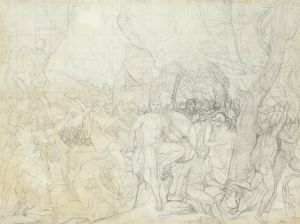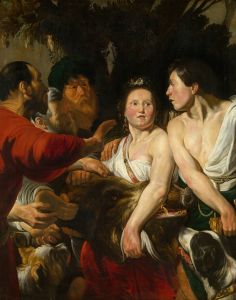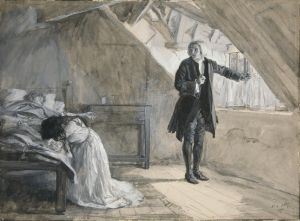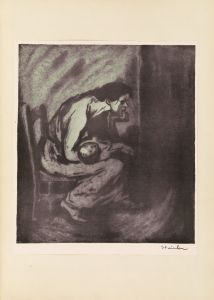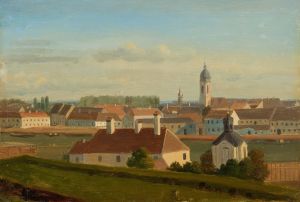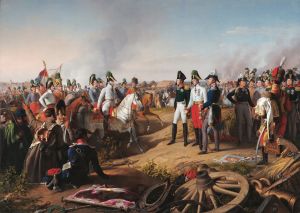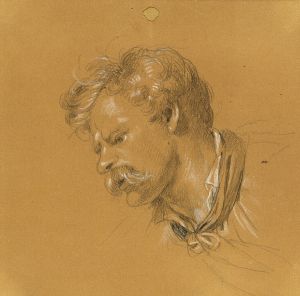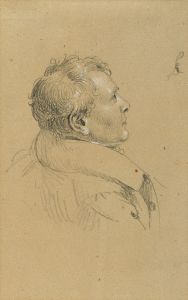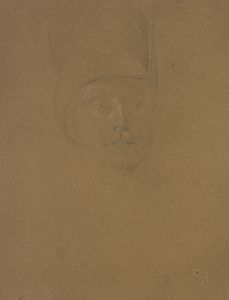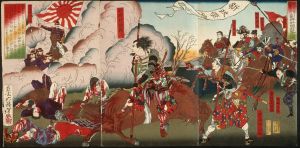
Studie zu ‘Manfreds Sterbestunde’
A hand-painted replica of Johann Peter Krafft’s masterpiece Studie zu ‘Manfreds Sterbestunde’, meticulously crafted by professional artists to capture the true essence of the original. Each piece is created with museum-quality canvas and rare mineral pigments, carefully painted by experienced artists with delicate brushstrokes and rich, layered colors to perfectly recreate the texture of the original artwork. Unlike machine-printed reproductions, this hand-painted version brings the painting to life, infused with the artist’s emotions and skill in every stroke. Whether for personal collection or home decoration, it instantly elevates the artistic atmosphere of any space.
Johann Peter Krafft was an Austrian painter known for his historical and genre scenes, as well as portraits. One of his notable works is "Studie zu ‘Manfreds Sterbestunde’," which translates to "Study for 'Manfred's Hour of Death'." This painting is a study for a larger work that Krafft intended to create, inspired by the dramatic poem "Manfred" by Lord Byron. Byron's "Manfred," published in 1817, is a significant piece of Romantic literature, exploring themes of guilt, redemption, and the supernatural.
Krafft's study captures the essence of Byron's protagonist, Manfred, who is a tormented nobleman haunted by his past actions and seeking solace in death. The character of Manfred is often interpreted as a reflection of the Byronic hero, a type of character that is deeply flawed, introspective, and rebellious against societal norms. Krafft's interest in this subject matter aligns with the Romantic era's fascination with individualism, emotion, and the sublime.
The painting study likely focuses on the climactic moment of Manfred's life, his final hour, which is filled with existential contemplation and supernatural encounters. Krafft's ability to convey complex emotional states and dramatic tension would have been central to this work, as he aimed to depict the internal struggle and ultimate resignation of Manfred. The study would have served as a preparatory work, allowing Krafft to experiment with composition, lighting, and expression before committing to the final piece.
Johann Peter Krafft was born in Hanau, Germany, in 1780 and later moved to Vienna, where he became a prominent figure in the Austrian art scene. He studied at the Academy of Fine Arts in Vienna and was influenced by the Neoclassical style, which is evident in his precise and detailed approach to painting. However, his works also exhibit Romantic qualities, particularly in their emotional depth and dramatic narratives.
Krafft's career was marked by his ability to capture historical and literary themes with a sense of realism and emotional intensity. His works often depicted scenes from Austrian history, as well as literary subjects, reflecting the cultural milieu of early 19th-century Europe. "Studie zu ‘Manfreds Sterbestunde’" fits within this context, as it draws on a popular literary work of the time and showcases Krafft's skill in translating literary themes into visual art.
While the study itself may not be as widely recognized as some of Krafft's completed works, it represents an important aspect of his artistic process and his engagement with contemporary literary themes. Krafft's ability to convey the psychological complexity of characters like Manfred demonstrates his mastery of both technical skill and emotional expression.
In summary, Johann Peter Krafft's "Studie zu ‘Manfreds Sterbestunde’" is a testament to his interest in Romantic literature and his ability to depict the nuanced emotional states of his subjects. Through this study, Krafft explored the themes of Byron's "Manfred," capturing the essence of the Byronic hero's internal struggle and ultimate quest for peace. This work highlights Krafft's contribution to the Romantic movement in art, as well as his enduring legacy as a painter who skillfully bridged the worlds of literature and visual art.





